Automation has become a top priority for companies seeking to scale faster, reduce errors, and free up operational time. But behind the excitement of “automating everything” lies a silent risk: doing it without a technology governance framework.
Automating without governance is like building a skyscraper without blueprints: it might stand at first, but sooner or later chaos sets in. The result? Undefined roles, indiscriminate access, duplicated processes, and errors nobody knows how to fix.
In this article, we’ll explore why technology governance is essential for safe, scalable, and sustainable automation—and how to implement it successfully.
What Is Technology Governance in Automation?
Technology governance goes beyond technical supervision. It’s the set of policies, practices, and tools that ensure automation is developed with control, traceability, and transparency.
This means creating a framework where every automated workflow has:
- Clearly assigned owners.
- Accessible documentation.
- Well-defined access rules.
- Audits and metrics to guarantee quality and efficiency.
Without governance, what starts as a quick experiment can turn into an uncontrollable web of processes no one knows how to maintain.
Why Is Governance Indispensable Before Automating?
Many companies rush into automation without governance. The result is predictable:
- Indiscriminate access – anyone can modify critical workflows.
- Lack of traceability – no clarity on who built what or how it evolved.
- Dependency on key people – when the creator leaves, the knowledge leaves with them.
- Duplicated or outdated processes – multiple versions of the same flow circulating without control.
Automation without governance doesn’t scale efficiency—it scales disorder.
Key Pillars of Effective Technology Governance
1. Access Control
Define clear roles and permissions. Not everyone should be able to modify critical processes.
2. Structured Documentation
Each workflow needs a standard sheet: objectives, tools involved, owners, inputs/outputs, and last update.
3. Workflow Ownership
Assign responsible owners who monitor, update, and ensure continuity. Nobody should ever ask: “Whose workflow is this?”
4. Continuous Auditing and Monitoring
Track errors, review efficiency regularly, and generate impact reports. What isn’t measured can’t be improved.
5. Separated Environments
Development, testing, and production must be differentiated to prevent critical interruptions from improvised testing.
Practical Example: Governance with Make (No-Code Ecosystem)
Tools like Make allow you to visualize and manage automation governance in one place.
With Make Grid, companies can:
- View all active workflows.
- Filter by owners and status.
- Detect errors and duplicates.
- Assign ownership and ensure traceability.
This enables informed, structured decision-making and prevents automation from turning into a black box.
Best Practices to Get Started
- Create an internal automation policy – define which processes can be automated, who owns them, and how approvals work.
- Establish a standard documentation template – ensure every workflow follows the same structure.
- Assign clear roles and responsibilities – separate design, maintenance, and approval tasks.
- Implement periodic audits – review efficiency, errors, and redundancies.
- Set up separate environments – never test in the same environment where critical processes run.
Technology governance is not an obstacle to automation—it’s what makes automation safe, scalable, and sustainable. Without governance, automation only accelerates disorder. With governance, it becomes a true competitive advantage.
👉 At Lab9, we help your company implement technological governance frameworks to ensure automation is not only effective but also secure and sustainable. Would you like to work with us to develop a customized strategy? Contact us by clicking here
👀Don't miss our article on Veo 3 y Sora: how artificial intelligence in video is already changing the rules for agencies, brands, and production companies, accelerating the way we think about and produce content.
